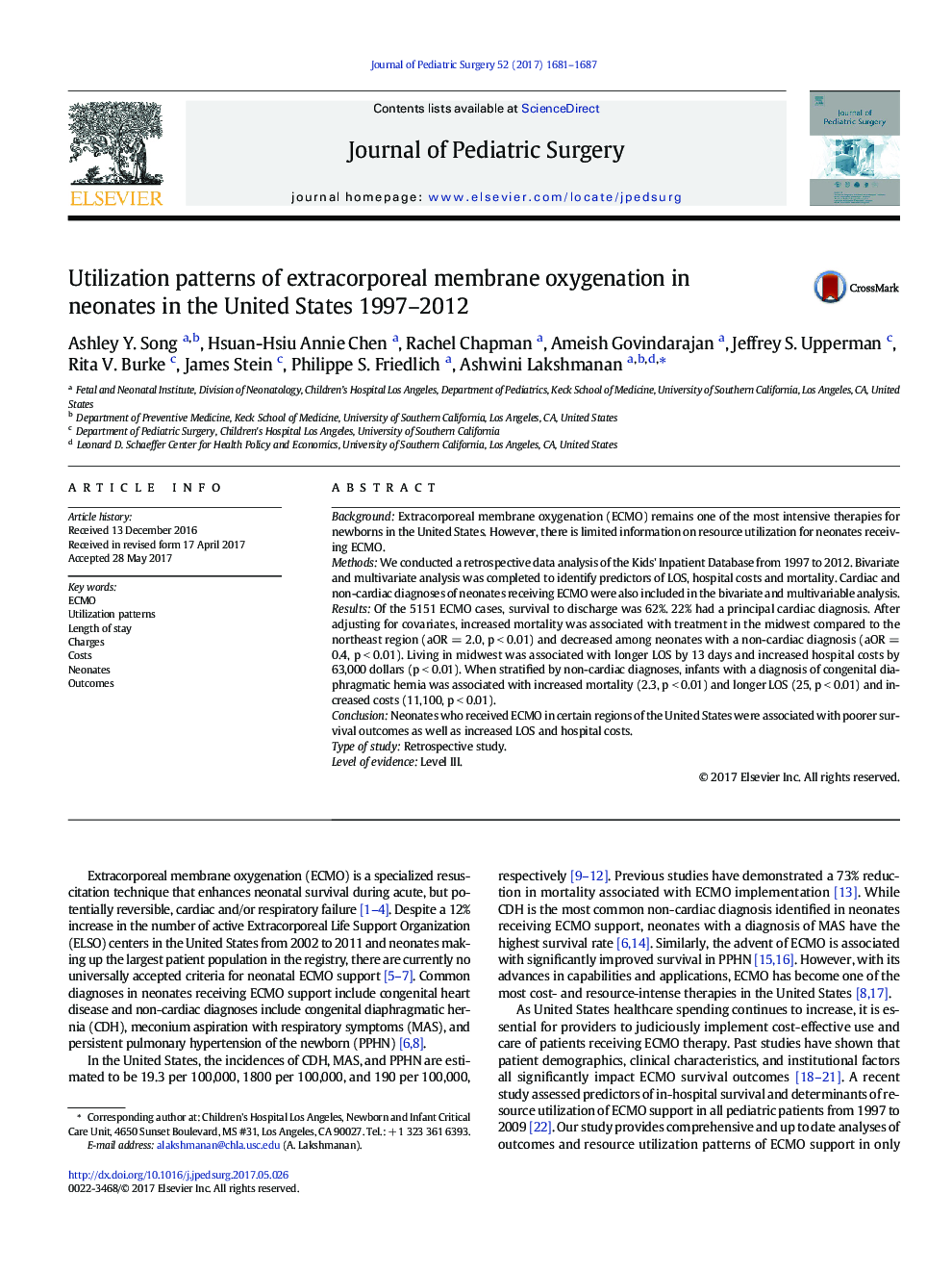| Article ID | Journal | Published Year | Pages | File Type |
|---|---|---|---|---|
| 5718081 | Journal of Pediatric Surgery | 2017 | 7 Pages |
BackgroundExtracorporeal membrane oxygenation (ECMO) remains one of the most intensive therapies for newborns in the United States. However, there is limited information on resource utilization for neonates receiving ECMO.MethodsWe conducted a retrospective data analysis of the Kids' Inpatient Database from 1997 to 2012. Bivariate and multivariate analysis was completed to identify predictors of LOS, hospital costs and mortality. Cardiac and non-cardiac diagnoses of neonates receiving ECMO were also included in the bivariate and multivariable analysis.ResultsOf the 5151 ECMO cases, survival to discharge was 62%. 22% had a principal cardiac diagnosis. After adjusting for covariates, increased mortality was associated with treatment in the midwest compared to the northeast region (aOR = 2.0, p < 0.01) and decreased among neonates with a non-cardiac diagnosis (aOR = 0.4, p < 0.01). Living in midwest was associated with longer LOS by 13 days and increased hospital costs by 63,000 dollars (p < 0.01). When stratified by non-cardiac diagnoses, infants with a diagnosis of congenital diaphragmatic hernia was associated with increased mortality (2.3, p < 0.01) and longer LOS (25, p < 0.01) and increased costs (11,100, p < 0.01).ConclusionNeonates who received ECMO in certain regions of the United States were associated with poorer survival outcomes as well as increased LOS and hospital costs.Type of studyRetrospective study.Level of evidenceLevel III.
